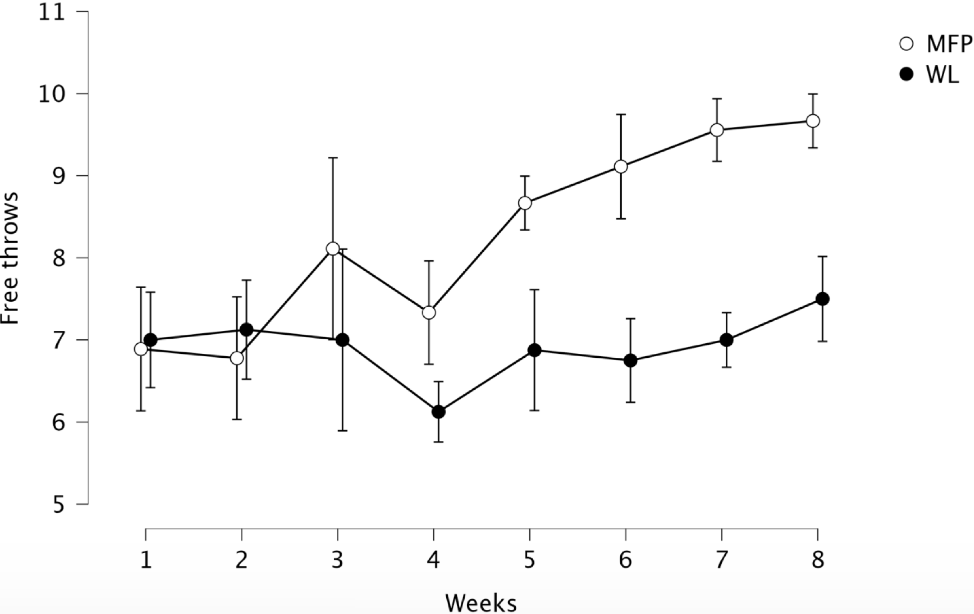August 21, 2023 by Fuel & Fortify
Why It's Worth Mastering Mindfulness

In endurance sports, the adage holds true: mental fortitude often outweighs physical prowess. And as events extend in duration, the significance of psychological aptitude magnifies. But how do we cultivate our mental faculties? What strategies yield optimal outcomes?
Mindfulness is revolutionising the sports world, as an increasing number of athletes are adopting a fresh approach to their craft by wholeheartedly embracing this concept that has become a cornerstone in the wellness industry for decades.
As endurance athletes who value data-driven approaches, the need for tangible proof of the benefits from a new training aid is paramount. The topic of mindfulness has become so pervasive that another discourse on it can appear closer to mockery than serious scientific discussion. Fortunately, in the last few years, there’s been a growing body of evidence around the place mindfulness in endurance sport and the plethora of elite performers tapping into the realm of “brain endurance training” as a way to elevate athletic performance.
Athletes from all sporting backgrounds have been studied—runners, cyclists, shooters, basketball and hockey players—and the research results are worth paying attention to.
But first let’s break down what mindfulness, in essence, is.
A Mindfulness Approach
Mindfulness and meditation are often used interchangeably, but they are not the same. Meditation constitutes a practice, within which various qualities, including mindfulness, can be developed.
For individuals unfamiliar with the concept, mindfulness can initially appear abstract and perhaps a bit elusive. Like anything foreign, it requires some exploration and guidance to fully grasp. Mindfulness is sort of this omnipresence, spread across all facets of life—mindful eating, walks suffused with awareness, or conversations can certainly be steeped in mindfulness. Engaging in informal mindfulness practices like these makes us take ordinary actions with a purposeful intention to be fully present.
We can decelerate our pace, hone our focus, set aside immediate judgments, and immerse ourselves wholeheartedly in whatever reality is unfolding in the present instant. It encourages acceptance and awareness of whatever is happening in the present moment, whether it’s positive, negative, or neutral.
John Kabat-Zinn, one of the most popular Western writers on this topic and creator of the Mindfulness-Based Stress Reduction program (MBSR), defines mindfulness as “the awareness that arises through paying attention, on purpose, in the present moment, non-judgmentally.”
The Mind-Body Connection
The connection between the mind and body is undeniable. The intersection between physiology and psychology as athletes train their bodies to endure long distances and challenging conditions, can also train their minds to stay focused, calm, and resilient. Mindfulness techniques, such as breathing exercises, can help athletes manage stress and anxiety, which are common hurdles to overcome in both training and on race day.
In the moment of execution—and in endurance sport, this can often mean hours, it’s important to separate from outcome (eg. will I, won’t I make it to the finish line, hit my goal time…).
Recognising that thoughts make up our subjective experience and acknowledging that the half-life of negative emotions is incredibly short—and yes, even at kilometre 38 of the marathon—is incredibly valuable. That is, if we choose to practice mindfulness regularly.
One study (Nien et al.) used a run-to-failure test to compare a group that underwent mindfulness training compared to a control group (no mindfulness training). Whilst the results showed no significant differences in biomarkers like VO2—the time to exhaustion improvement in the mindfulness group was markedly better. This premise of being able to ‘dig deeper’ was confirmed by the earlier findings of Jones and Parker, who established that the relationship between mindfulness and a runner’s personal best time in the 800-meter race is partially mediated by the extent of pain catastrophising. This could mean that individuals who practice mindfulness may experience reduced pain catastrophising, which could contribute to improved performance in the 800-meter race.
Sullivan et al. defined pain catastrophising as an “exaggerated negative mental set brought to bear during an actual or anticipated pain experience”. That sinking feeling when you take stock of the VO2 intervals ahead of you. We tend to magnify the anticipated pain stimulus and begin to feel helpless in the presence of pain.
Quite remarkably, studies have demonstrated tangible physiological effects of meditation practices on endurance athletes. Solberg et al. looked at groups of Norwegian runners who underwent weekly ACEM meditation sessions (comparable to Transcendental Meditation). Interestingly, the reductions in immediate and 10 minute post-exercise lactate responses after the intervention period were greater for the meditation group (over the control group).
“The lower blood lactate observed after meditation may be due to reduced noradrenaline (norepinephrine), reduction of anxiety caused by relaxation training, or redistribution of blood flow to a more aerobic skeletal muscle metabolism.” The researchers have assured that further analysis is needed, but this does indicate that meditation can have an impact on the rate of recovery.
There’s also the premise of performance anxiety or the pre-race “jitters”. This study focused on the impact of an 8-week Mindfulness-Based Stress Reduction (MBSR) course on female collegiate rowers. The MBSR group exhibited improvements in psychological well-being and sleep quality. Notably, MBSR participants experienced subjective and objective sleep improvements, even weeks after course completion. Furthermore, increased mindfulness was correlated with enhanced “coping skills” during the 6K ergometer test. Again, this ability to dig deeper.
MBSR’s potential influence on attentional strategies during athletic performance was also discussed, suggesting a role in boosting physical performance. Some may refer to this as flow state.
And although this concept of flow is less studied in endurance, in precision-based sports like basketball and table tennis, athletes have demonstrated accuracy gains in free-throws when they have undergone a Mindful for Performance (MFP) program.

Average of successful free throws during training sessions per week: Mindfulness for Performance (MFP) group versus Waitlist (WL) group
As for the number of successful free throws during competition games, the MFP group recorded a 69% success rate on the first game after the intervention (9/13). In the WL group, the success rate in free throws was 53% (16/30) in the same game.
The sister study observing Table Tennis competitors found that the more the players adhered to the MFP program, the better the outcomes were for them.
How to Get Started
Meditation shines in its ability to be practiced anywhere, anytime. Research emphasises frequency over duration to fully realise the benefits. What’s most achievable for all walks of life? Start with 5 or 10 minutes daily. During meditation, prioritise comfort—relaxed sitting or lying over perfect posture. Some of our favourite apps out there to help you get going, offering a mix of paid and completely free subscriptions.
- Headspace
- Waking Up
- Calm
- Insight Timer
Summary
The benefits of incorporating a mindfulness practice into training routines and pre-race rituals go beyond race day performance—this is about levelling up your life across the board.
Practice when you can and make it fit into your busy schedule.
And if your training sessions are a good time to work it in— Headspace provides guided running meditations known as ‘mindful running’. These guided sessions enable you to cultivate awareness during your training, letting go of distractions and really lean in to your physical movements.